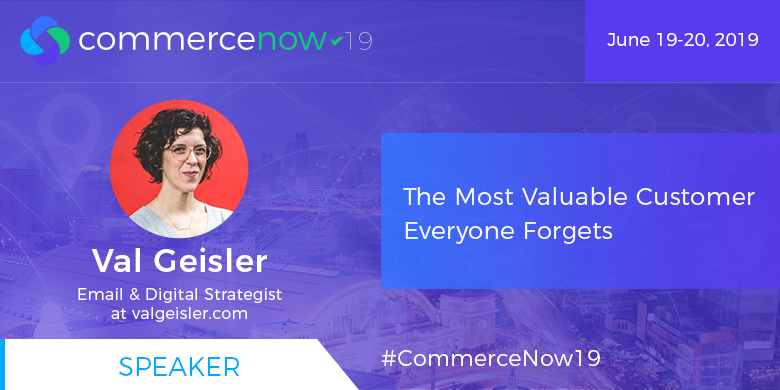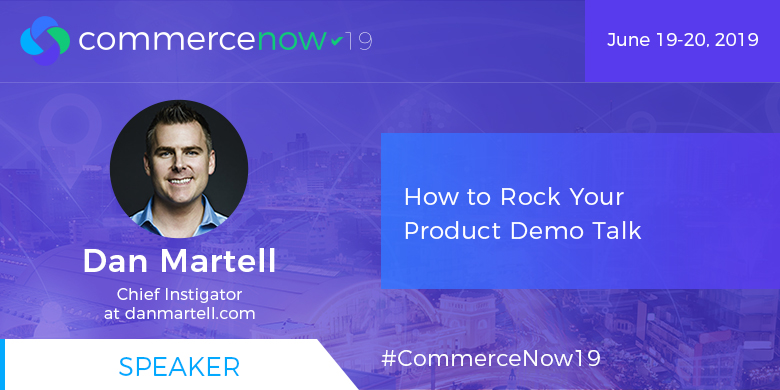This past June, 2Checkout was the proud host of our third CommerceNOW online event, where 12 amazing marketing, sales, and eCommerce experts shared their knowledge with the audience. Almost 1,200 people registered for the event and during the more than ten hours of live-streamed sessions they learned about the latest strategies and tactics for eCommerce, digital marketing, conversion rate optimization, customer experience, and more.
This is the second of a series of blog posts where we’ll share the key takeaways from several of the CommerceNOW ’19 sessions. Don’t forget you can also register to watch all of the recorded webcasts here.
Three of our experts’ presentations got to the heart of fine-tuning your marketing strategy to get and keep customers, and how to avoid some of the most common pitfalls facing your efforts.
Val Geisler, Email and Digital Strategist, opened her presentation by saying that there is no one right answer or formula to getting and keeping customers: you have to continuously test your approach. She shared ideas around three main areas:
- How to grow MRR without looking for new customers
- How to win back cancelled customers
- Three underutilized retention strategies
Strategy #1: Create relationships with your customers beyond just your support team Responding to open tickets is not enough: add an additional layer or two. A follow-up email to the customer after the ticket is closed is one, and could come from a member of a different department for a more personal approach. “How are things going since we helped you with your issue?” Pull a list of feature requests from cancelled customers and send them follow-ups. All of this personalization can result in retention or winning back customers.
Strategy #2: “Human With a Capital H”: Get to Know Your Customers
Geisler loves the idea of trying to set up a personal phone conversation with every customer, as daunting as that may be. “Ask them why they signed up for your product. See where they’re stuck and how you can help. Ask them what they are working on and what their problems are.”
Strategy #3: Build Habits
Geisler referred to the “habit loop” of 1) Reminder, 2) Routine, and 3) Reward. A key example of where you can amplify your success, she says, is in the onboarding process with cancelled customers who are coming back to your product. Don’t assume they need the same onboarding that they’ve already completed; let them start off where they left. Having success the second time around with these customers means making the experience as pleasurable and easy as possible—let them choose how to tailor it, as much as possible.
In conclusion, Geisler echoed her introductory emphasis on the importance of continuous testing of your strategies. “Test these [three] strategies and see what works. Measure your win-back rate.”
Wes Bush, a Product-Led Growth Consultant with Product-Led Institute, focused his presentation on the three ways that can change your approach to converting free SaaS users into happy, paying customers. He called it the “Bowling Alley Framework.”
- Aim for Straight-line Onboarding (picture the bowling ball making an unimpeded beeline for the pins). Make the visitor journey to their goal and outcome—not just signing up for your product, but getting the results they need—as quick and easy as possible. Bush points out that 40 to 60% of customers never use the product after signing up. How to prevent this? 1) Map out the path, 2) Label every checkpoint as either absolutely necessary, necessary but perhaps later in the process, and not necessary. 3) Use only the absolutely necessary checkpoints as your “straight line to the pins.” Even removing one extra step from the initial onboarding (letting them activate their email later, for instance) can lead to an increased 20% boost.
- Supply a Product Bumper (picture one of the gutters that you want to avoid with your bowling ball). Supply product tours, a progress bar that shows your customers how far they are in the onboarding process; checklists of what the users need to do to reach their desired outcome; and onboarding tool-tips that map out the way.
- Make the most of a Conversational Bumper (the other gutter), which can include user onboarding emails, in-app messages, and sales outreach. Send a welcome email and follow up with a usage tip email that triggers users to maximize your product in unexpected ways. Sharing case studies of successful customers via another email can convince free users of the value of a paid subscription. Send an expiry warning email, while sharing the benefits of upgrading.
Dan Martell, Chief Instigator at SaaS Academy, opened his presentation by discussing the issues that tend to plague product demos: they are never-ending, there is zero emotion in the process, and the follow-up to the demo leads nowhere.
He shared his Five Hot Principles for Delivering a Successful Product Demo that will help solve these problems:
- Explain and outline the OUTCOMES of using your product, instead of belaboring the PROCESS. Know in advance, if possible, exactly what your customer is looking for, and tailor your demo to directly demonstrate how the product will meet that need.
- Connect to the PAIN of your customer and show them how your product can help them surpass that pain and reach their potential. “Understand their challenges, quantify them, then emotionally connect,” said Martell. Get them to commit to solving their problems, he emphasized, and show how your product can get them there.
- LEAD BY QUESTIONS. Salespeople need to use this demo to listen, not just talk. Be seen as the authority by asking the questions and then answering them so that it is clear that your product is the most appropriate solution.
- PEG THE MONEY SHOT. Martell said to leave your best feature—the one that directly addresses their problem, for the end of the demo. Make it impossible for them to refuse the ask.
- UNDERSTAND THEIR COMPANY BUYING PROCESS. Figure out who is involved in choosing the product and then connect directly with those key players. Map the organization as much as possible, ahead of the demo, so the process will go more smoothly and is less likely to be sidetracked or delayed. And remember, he said “a champion is almost as crucial as the authority.” Find the champion of your product in the organization, the one whose department or function needs it the most, then connect directly with them. This champion, Martell said, will then be more equipped to help convince the contact who is in charge of the purse strings.
To learn more about the trends, insights and tips & tricks that some of the greatest minds in eCommerce, digital marketing, CRO, and customer experience shared at CommerceNOW ’19, you can sign up here to access all the sessions:









